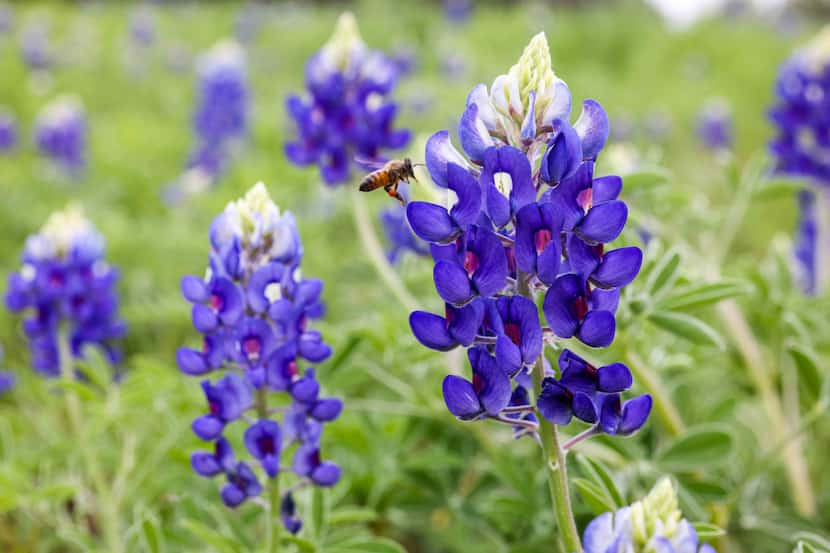Spring may have sprung early in Texas this year, with some bluebonnets already in bloom this March.
Across Central and South Texas, some have already captured the blue beauties on camera in various gardens and on random roadsides, including in Houston and San Antonio.
But why are the state wildflowers sprouting unseasonably early this year? And is this also the case in North Texas?
In short, Texas bluebonnets require a combination of rain and sunshine to bloom, and this year’s weather conditions — including an intense drought — have been favorable for their growth.
Here’s what else you need to know about bluebonnets this season, including the reason behind their unexpected appearance and what their forecast is.
Why are they early this year?
Bluebonnets are popping up sooner than usual due to warm temperatures in early 2023, said Hannah Armstrong, a horticulturist at the Lady Bird Johnson Wildlife Center. Based outside of Austin, the center is home to more than 900 native Texas plants, including the bluebonnet.
The warmer it is outside, the earlier plants can bloom, Armstrong said.
“The unseasonably warm weather in January and February is what made (blooming) early,” she said.
This also explains why bluebonnets first crop up near dense cities, which act as hubs of radiant heat from concrete and cars, Armstrong said. Even a slight elevation in temperature can contribute to earlier sprouting.
In Austin, bluebonnets typically peak around late March — but this year’s batch is expected to peak now, in mid-March. The last time bluebonnets sprouted this early in Central Texas was in 2020, with some even blooming in February.
Dallas’ wildflower season typically trails Austin’s by two weeks, occurring around late March to early April. Armstrong said it’s likely North Texans will also see an earlier bloom.
Is it a good year for bluebonnets?
Yes — and maybe no.
According to the 2023 forecast from the Wildflower Center, the 2023 wildflower season is expected to be “especially lush.” But that isn’t entirely certain.
“It’s definitely dependent on conditions moving forward, as well. We do need continuing rains through the season to help them bloom, and warm temperatures,” Armstrong said.
Current conditions favor a vibrant season. Due to an exceptional amount of fall rain, bluebonnet seeds were able to germinate well, said Texas A&M extension horticulturist Larry Stein. But it may not be enough for them to flourish.
“They need rain right now to really extend that bloom and make them a show,” Stein said.
This summer’s drought may have contributed to a high germination rate, as it killed off a few types of grass and opened up soil space for wildflower seeds to germinate, Armstrong said. More germination — or the process by which a plant grows from a seed into a seedling — can generate more blooms.
Across the state, warm weather and rain are in the forecast for March and April, likely leading to a healthy bluebonnet bloom, Armstrong said.
“People in Texas, for the most part, can expect an early and slightly above average bloom year,” she said.
Staff writer Isabella Volmert contributed to this report.






